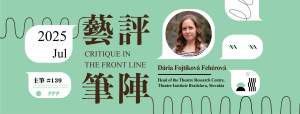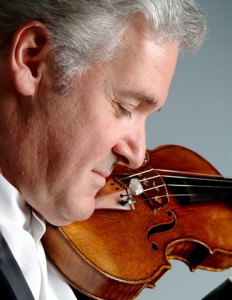 |
I felt like anervous participant in a birthday party sitting at DanceArt’s 15th anniversary production Tea Break. I brought along an imaginary birthday cake but couldn’t quite find the right moment to hand it over. The show began with a variety of brief tableaux of the four choreographers— Francis Leung, Andy Wong, Yvette Huang and Allen Lam, who are also DanceArt’s founding members. Donned in black against a pitch-dark backdrop, the quartet moved slowly from solitary positions (standing, squatting, kneeling and standing upside-down) to more intimate ensembles. In the midst of the dimmed light accompanied by a forlorn violin tune, I couldn’t help but think I had gone to the wrong party. My anticipation of a joyous gathering had been warranted by the show’s fairy-talesque, white-as-snow publicity images and, after all, it is titled “Tea Break”.
Yet, on deeper thought, the brooding aura is what characterises DanceArt. Anyone who has been to a DanceArt production, or in fact a glance at the titles of their previous works, would have noticed the company’s disposition to the “soulful” and the “poignant”— as stated in their company biography. The deadpan faces of Leung and Wong and the composure of the entire cast, which had been gracefully consistent throughout the performance, are indispensable to this underlining artistic notion.
Tea Breakis the first work produced by the company after repositioning itself as “Dance Theatre”, despite their relatively long history of producing works with predominant narrative elements, often via media in addition to pure body movements. The multimedia work Asunder-Virtual or Real (2009) and on-site literary work Shattered Shackles (2010) performed at Dr Sun Yat-sen Museum are two distinctive examples.
There is no denying that Tea Break was a gathering, though not in a conventional sense. Three generations of dancers, be it long-time partners or occasional participants of the company, collaborated in this showcase-like, reminiscing performance. Among them were Abby Chan (co-founder of Mcmuimui Dansemble), Taiju Matsumoto (collaborator of the 10-yeaer Dance Forest series with Andy Wong) and younger dancers— some of whom were students from DanceArt’s dance courses before becoming a professional dancer.
Some scenes in Tea Break would probably give DanceArt’s regular audience a sense of déjà vu, yet all the choreography taken from old works had been revised. A duet form Unreachable Distance (2010) had been redone by Andy Wong and Yvette Huang, against the video recording of their previous live performance, and now together with a pair of young dancers on stage. Audience who had seen Unreachable Distance would get something more than what was presented on stage. But for the same reason, new audience might find the excerpt lacking in a coherent narrative force to sustain the duet’s emotional tug-of-war.
A subsequent duet between Allen Lam and Abby Chanon a bench made arare delightful moment amid the show’s dejected mood. A re-creation from a previous work 15 years ago, the duet came with a touch of playfulness and its tenderness made it agratifying piece in its own right. Otherwise, every scene (except for the last) was veiled in an emotional heaviness, incongruous with the light-hearted theme. And despite being billed as a piece of dance theatre, a narrative thread, if only a loose one, was absent from Tea Break. There were indeed attempts to weave individual scenes by having dancers overstayed their scene like a ghostly afterimage in the subsequent scene. There was also a tint of red in their makeup and a red detail on their dark costumes. But keen spectators, like myself, would have a hard time picking up the pieces to make sense of a greater narrative frame, if any.
As the cream on the imaginary cake on my laps started to melt, I realised something more precious in this show than just having a convivial party. The tacit understanding among the four founding members developed over the years was evident in a riveting scene. It began with four younger dancers doing a rhythmic dance formed by quadrilateral patterns around four cubic stools. But it was not until a later moment did this energetic dance reached its climax. When the dance seemingly came to an end, the four old partners appeared on stage and repeated the same moves, with slight variations, on the floor under a square spotlight. With strikingly more power and tenacity, the four did their moves that speak volumes for their bond and passion. They displayed more youthful energy than their young counterparts. For a moment, one forgot about that fact that these are dancers of an advanced age— at least by conventional standards. And this very fact makes the dance all the more admirable.
The moment I had been anticipating eventually arrived at the final scene, when the backdrop is changed into a friendly white hue. With a cup and a saucer in hand, the twelve cast members appeared on stage one after another, leaving behind their pensive personae. Sitting at the white communal table, everyone was genuinely happy. They smiled, toasted and hugged each other. As if taking snapshots, the cast composed a number of picturesque tableaux between the consecutive black-outs with swift speed and great joy.
Finally, I found the moment to hand the cake over.
本網站內一切內容之版權均屬國際演藝評論家協會(香港分會)及原作者所有,未經本會及/或原作者書面同意,不得轉載。










